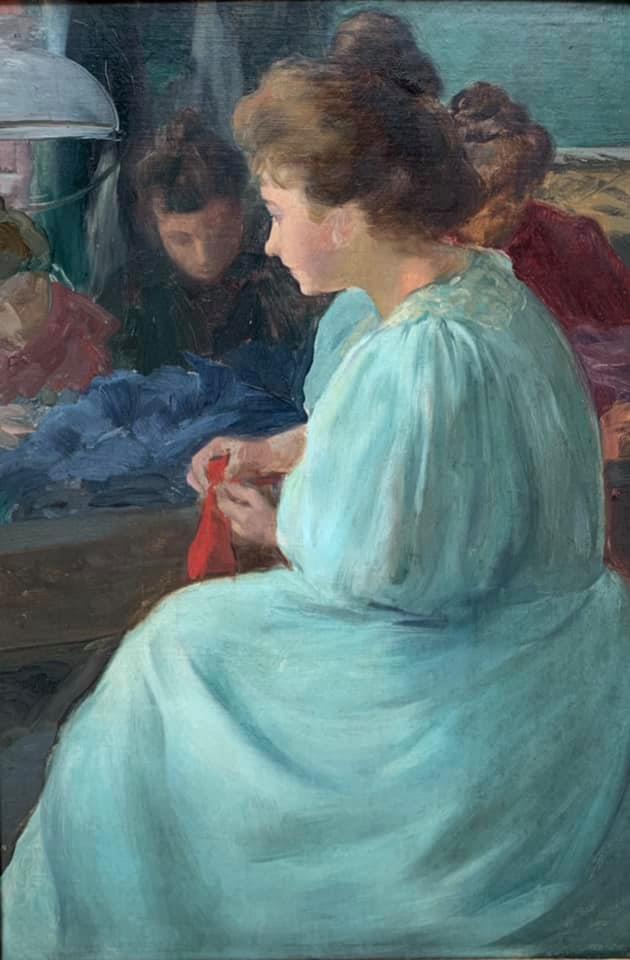Description:
Emile Georges Giran (1870-1902) was a French painter, educated in Paris. He first presented his works at the Salon of the Société des Artistes Français in 1890 and for the following years he exhibited at the Salons of the Société Nationale des Beaux-Arts. He was engaged in landscape and portrait painting in oil and pastel. A popular motif he painted was interior scenes with strong emotional moods. He also worked in lithography, gaining popularity through creating posters*.
Description of the painting:
The painting depicts a group of women at work. The foreground is occupied by a figure of a woman which almost fills the entire painting field. She is shown in profile, in a sitting position. She is dressed in a light blue dress with a lace collar. In her hands she holds a piece of red fabric, which she is working on. Her bright face stands out clearly against the dark background, her hair is tied up into a high bun. The woman appears to be lost in thought, almost absent, looking into the distance. Her gaze seems to be fixed on an indefinite point, as if the woman at that moment was in a completely different place in her thoughts. The second plan shows three women facing the viewer, sitting on the other side of the table. Their faces are blurred, with slight outlines of facial features. Like the woman in the foreground, their hair is tied up so as not to interfere with their work. The figures are in a room which is also only slightly outlined.
The artist portraying seamstresses focuses on the foreground character. He depicts her most accurately. It seems like a fleeting moment, in which, in the daily work of the seamstresses, one of them allowed herself a moment of daydreaming or contemplation. The picture is filled with moodiness, a certain kind of mystery that arouses the viewer’s curiosity. It provokes one to think about the topic of the woman’s musings. The foreground character also became a field to present light phenomena, which the artist presents on the dress. He emphasizes every fold of the fabric and conveys the light shade on them. Through strong lighting, the woman contrasts with the other characters and the dark-toned room.


